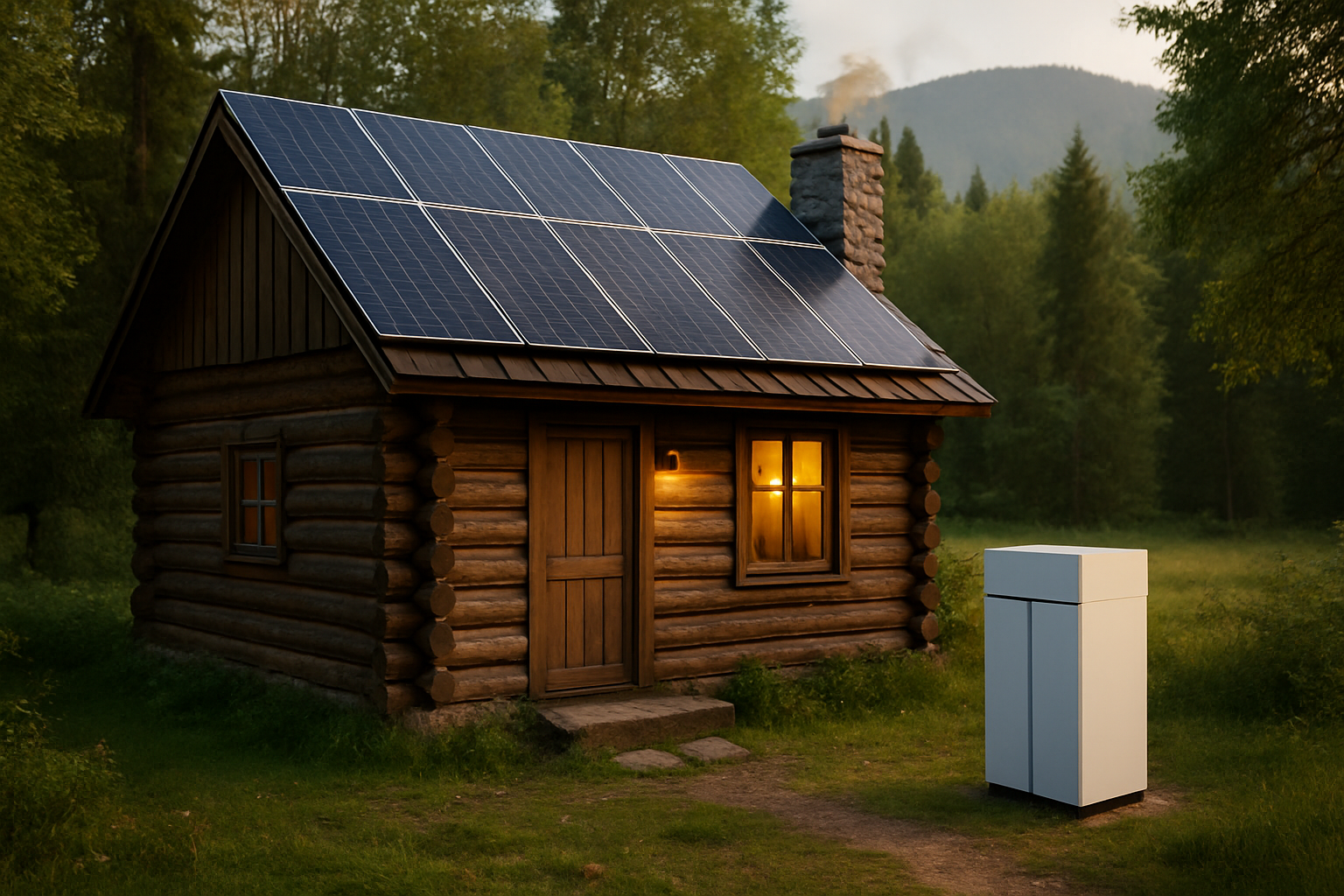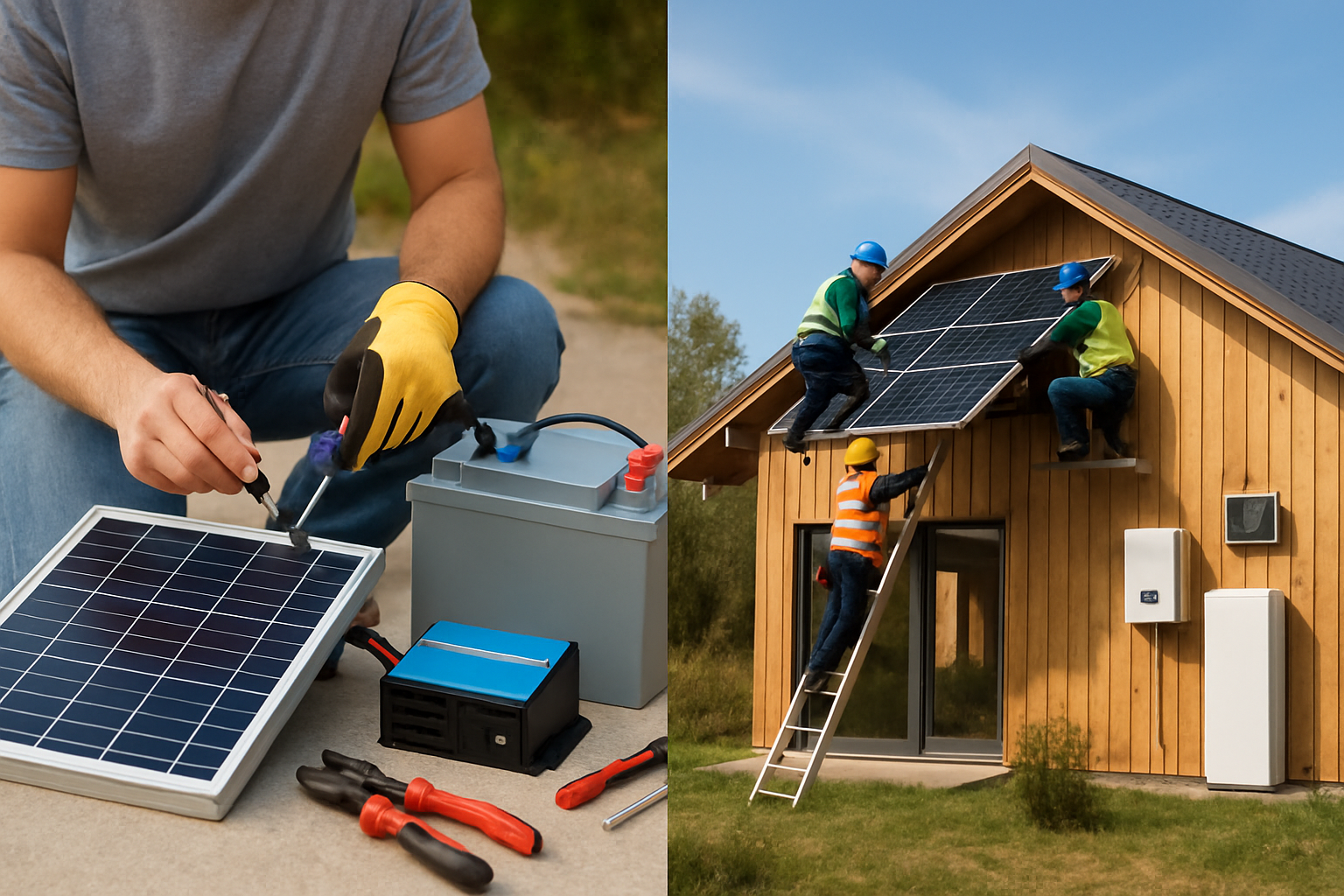Embarking on a solar energy project for your home or business presents a fundamental decision: building it yourself (DIY) or opting for a professionally installed turnkey solution. Many individuals are drawn to the DIY path, envisioning significant cost savings and a sense of accomplishment. However, this route often conceals a labyrinth of unexpected expenses and potential pitfalls. Understanding these hidden costs and risk traps is crucial for making a truly informed decision about your energy future.

Initial Cost Misconceptions and Component Sourcing Risks
The allure of a lower upfront price tag often drives the DIY solar decision. While hardware costs have become more accessible, the initial assessment rarely captures the full financial picture.
The Lure of Lower Upfront Costs
Solar PV panel costs have seen substantial reductions, dropping by more than 60% since 2010. This makes the idea of purchasing panels and other components directly seem like a straightforward way to save money. However, the actual cost of a functional system extends far beyond just the panels.
Component Quality and Compatibility
Sourcing individual components, such as LiFePO4 batteries, solar inverters, and PV panels, demands a deep understanding of technical specifications and compatibility. You risk acquiring parts that do not integrate seamlessly or meet necessary performance standards. Our expertise in manufacturing high-performance, safe, and reliable LiFePO4 batteries and developing integrated energy storage systems (ESS) highlights the importance of matching components for optimal system efficiency and longevity. Mismatched components can lead to reduced output, premature failure, and voided warranties across different manufacturers.
Unexpected Procurement Expenses
Beyond the sticker price of components, you will encounter additional procurement expenses. These can include shipping costs, especially for bulky items like batteries and panels, which can be substantial. Tariffs, import duties, and minimum order quantities for specialized parts can also inflate your budget unexpectedly. These often overlooked factors quickly erode the perceived savings of a DIY approach.
Installation Complexities and Labor-Related Pitfalls
Installing a solar energy system is a complex undertaking that requires specialized skills and adherence to strict regulations. The DIY path introduces significant challenges in these areas.
Technical Expertise and Safety Hazards
A solar installation involves working with high-voltage electricity, roof structures, and complex wiring. Without proper electrical and structural engineering knowledge, you face serious safety risks, including electrocution, falls, and damage to your property. Professional installers possess the certifications and experience to perform these tasks safely and effectively, adhering to all local building codes and electrical standards.
Permitting and Interconnection Challenges
The administrative burden of solar installation is often underestimated. “Soft costs,” which include permitting, installation, and interconnection fees, can comprise up to 64% of the total price for residential solar energy systems. The United States alone has over 18,000 local jurisdictions, each with its own unique PV permitting requirements, alongside more than 5,000 utilities setting rules for grid connection. Navigating this bureaucratic landscape can be time-consuming and frustrating. Efforts like the Rooftop Solar Challenge have successfully reduced permitting times by 40% and fees by over 10%, but the complexity remains. Turnkey providers manage this entire process, ensuring compliance and a smooth transition to grid connection.
Hidden Labor and Time Investment
Your time has value. A DIY installation demands a considerable investment of personal time for research, planning, sourcing, and physical labor. Any mistakes or unforeseen issues can lead to significant delays and require costly rework. What initially appears as a weekend project can stretch into weeks or months, diverting your attention and resources from other priorities.
Long-Term Performance and Maintenance Surprises
A solar energy system is a long-term investment. Its performance and maintenance requirements over its lifespan are critical considerations that DIY approaches can complicate.
System Sizing and Optimization Errors
Accurately sizing a solar system to meet your energy needs and optimize performance requires detailed energy audits and sophisticated modeling. Incorrect sizing can result in an undersized system that fails to meet demand or an oversized system that represents unnecessary expenditure. Turnkey solutions, especially those focused on integrated ESS and off-grid solar solutions, are designed for optimal energy capture and storage, ensuring you receive the most efficient and reliable power.
Warranty and Support Gaps
With a DIY setup, you typically manage multiple warranties from various manufacturers for each component. If an issue arises, diagnosing the problem and coordinating repairs across different vendors can be a logistical nightmare. A turnkey provider offers a single point of contact and often a comprehensive system warranty, simplifying support and maintenance throughout the system's life.
Maintenance and Repair Costs
Even well-installed systems require periodic maintenance and occasional repairs. For DIY systems, troubleshooting complex electrical issues or replacing specialized components can be challenging and expensive without professional diagnostic tools and expertise. Turnkey solutions often include maintenance plans or readily available professional support, ensuring your system operates efficiently and reliably for years.
Financial and Regulatory Blind Spots
The financial landscape of solar energy includes various incentives and regulatory frameworks that can significantly impact your overall investment.
Incentives and Tax Credit Navigation
Governments offer various incentives, such as tax credits and rebates, to encourage solar adoption. For instance, the Inflation Reduction Act in the United States provides significant financial support for low-emission technologies, including solar PV and storage. Understanding eligibility, application processes, and maximizing these benefits can be complex. Professional installers are typically well-versed in these programs and can help you navigate the paperwork to ensure you receive all applicable financial advantages.
Insurance and Liability Issues
An improperly installed DIY solar system might not meet insurance requirements, potentially voiding your homeowner's policy or increasing premiums. Furthermore, you could face liability issues if your installation causes damage or injury. Turnkey installations, performed by licensed professionals, typically come with appropriate insurance and guarantees, mitigating these risks.
Resale Value Impact
A professionally installed and certified solar energy system generally adds more tangible value to your property. Potential buyers often prefer systems with professional warranties and documentation, as it assures them of quality and reliability. A DIY system, if not installed to professional standards, might be viewed as a liability rather than an asset, potentially impacting your home's resale value.
Making an Informed Energy Choice
Choosing between DIY and turnkey solar involves more than just comparing initial component prices. It requires a thorough evaluation of hidden costs, potential risks, and your comfort level with technical complexities, regulatory hurdles, and long-term maintenance. While DIY offers a sense of control and potential savings on labor, it demands significant personal investment, technical expertise, and a willingness to manage unforeseen challenges. Turnkey solutions, on the other hand, provide peace of mind through professional installation, comprehensive warranties, and expert navigation of permits and incentives. Ultimately, selecting the right path ensures you achieve reliable and scalable energy independence, aligning with your long-term goals.
Frequently Asked Questions
Is DIY solar truly cheaper in the long run?
While DIY solar may appear cheaper upfront due to savings on professional labor, it often incurs hidden costs such as unexpected procurement expenses, permitting fees, potential rework, and the value of your time. These factors can significantly reduce or eliminate initial savings, making the long-term cost comparable to, or even higher than, a turnkey solution.
What are the biggest risks associated with DIY solar installation?
The primary risks include safety hazards from working with high-voltage electricity and on rooftops, potential damage to your property due to improper installation, system underperformance from incorrect sizing or incompatible components, and difficulties with warranties and technical support across multiple manufacturers.
How does a turnkey solar solution simplify the process for me?
A turnkey solution handles every aspect of your solar project, from initial assessment and system design to component sourcing, permitting, professional installation, and interconnection. You benefit from expert knowledge, comprehensive warranties, and a single point of contact for all your needs, minimizing your effort and ensuring a compliant, efficient system.
What kind of support can I expect from a turnkey solar provider?
Turnkey providers typically offer end-to-end support, including system design and optimization, assistance with navigating incentives and tax credits, professional installation by certified technicians, comprehensive system warranties, and ongoing maintenance and technical support. This holistic approach ensures your system operates reliably for its entire lifespan.
Are there financing options available for turnkey solar systems?
Yes, many turnkey solar providers offer or facilitate various financing options, including loans, leases, and power purchase agreements (PPAs). These options can make professional solar installations more accessible by spreading the cost over time, often with competitive rates and favorable terms.
References
- EERE Success Story—Nationwide: Slashing Red Tape To Speed Solar Deployment for Homes and Businesses. Energy.gov. Published January 24, 2014.
- World Energy Investment 2023. International Energy Agency (IEA). Published May 28, 2023.
- International Renewable Energy Agency (IRENA).
- U.S. Energy Information Administration (EIA).





Leave a comment
All comments are moderated before being published.
This site is protected by hCaptcha and the hCaptcha Privacy Policy and Terms of Service apply.